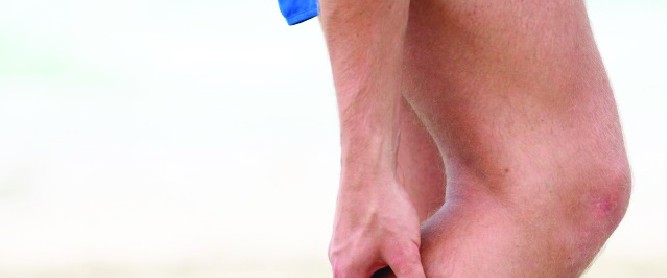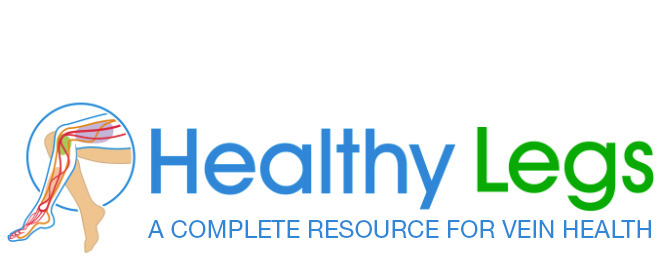
What is Peripheral Arterial Disease?
Peripheral Arterial Disease (PAD) is the reduced circulation of blood to any part of the body and is the medical condition relating to “poor circulation”. PAD most commonly affects circulation in legs and kidneys, and less commonly the arms. This lack of blood flow means the affected area can no longer receive the nutrients it needs to function properly and, if left untreated, can lead to more serious complications.
How common is it?
PAD generally affects around 10-15% of the population. In 50% of cases there are no symptoms, meaning under-diagnosis is common.
Who is more at risk?
People with the following risk factors have an increased likelihood of developing PAD:
- Diabetes
- Smoking
- Advancing age
- Being male
- Inactivity
- Being overweight or obese
- Family history of vascular disease
- Medical history of stroke or heart disease
- High blood pressure
- High cholesterol
What causes PAD?
The most common cause of PAD is atherosclerosis, which is the build-up of plaque (fatty deposits) inside the arteries. This causes the arteries to narrow and harden, reducing blood flow.
Other causes include:
Other causes include:
- Diabetes: high blood sugar can weaken and damage the vein walls, causing them to narrow
- Arteritis: caused by some autoimmune diseases, arteritis is the inflammation of arteries
- Clots: blood clots can lodge in the vessel, blocking the flow of blood
- Infections: eg syphilis and salmonellosis can cause scarring and narrowing of the blood vessels
What are the signs and symptoms?
In roughly half of all cases there are no noticeable symptoms. Similarly, it is quite common for people to disregard symptoms such as aching legs as a result of ageing. If you do notice any of the symptoms below it’s important to get checked by a Doctor.
Common symptoms often include:
Common symptoms often include:
- Muscle pain, cramps or heaviness (usually in the legs)
- Wounds that take longer than usual to heal
- Burning, coldness or numbness
- Discoloured and shiny skin in the affected area
- Hair loss in the affected area
What are the potential complications?
People with PAD are up to six times more likely to suffer a heart attack or stroke.
Other complications include:
Other complications include:
- Critical limb ischemia, which is when skin infections progress into tissue death (gangrene)
- High blood pressure
- Hypertension
- Blood clots
- Organ damage
- Varicose veins
- Kidney issues
- Permanent numbness, tingling or weakness in legs and feet
- Permanent aching or burning in legs or feet
What treatments are available?
Your Doctor will consider the best option for treatment depending on your specific conditions and circumstances. The following is a list of common treatment methods:
Exercise
The most effective treatment for PAD is regular exercise. You may have to begin slowly and work up, but your Doctor can provide an exercise plan based on your individual condition.
Quit smoking
If you smoke, quit. As well as numerous health risks, smoking damages blood vessels and causes atherosclerosis.
Diet
A diet high in fibre and low in cholesterol and saturated fats is important to reduce cholesterol levels. For more information about foods that can help improve circulation, read our article ‘Nutrition for improved circulation’. A dietician can also help you make the best dietary changes.
Medication
Your doctor may prescribe medication to lower cholesterol and blood pressure levels and to prevent blood clots.
Angioplasty
This involves threading a catheter into the narrowed vessel and inflating a tiny balloon on its tip. This balloon then stays in place and opens up the vessels, improving blood flow. Angioplasty is usually considered a temporary treatment.
Stents
These ‘metal sleeves’ are implanted during an angioplasty to keep the vessel open.
Circulation devices
The Veinoplus Arterial is a pocket-sized electrostimulation device that triggers deep calf contraction, and can be used to improve circulation and relieve symptoms of PAD. Read more about Veinoplus Arterial here.
If you have any of the symptoms mentioned above or are concerned you may be at risk of developing Peripheral Arterial Disease, please see your Doctor, who may refer you to a vascular surgeon for an expert assessment and discussion of treatment options.
Exercise
The most effective treatment for PAD is regular exercise. You may have to begin slowly and work up, but your Doctor can provide an exercise plan based on your individual condition.
Quit smoking
If you smoke, quit. As well as numerous health risks, smoking damages blood vessels and causes atherosclerosis.
Diet
A diet high in fibre and low in cholesterol and saturated fats is important to reduce cholesterol levels. For more information about foods that can help improve circulation, read our article ‘Nutrition for improved circulation’. A dietician can also help you make the best dietary changes.
Medication
Your doctor may prescribe medication to lower cholesterol and blood pressure levels and to prevent blood clots.
Angioplasty
This involves threading a catheter into the narrowed vessel and inflating a tiny balloon on its tip. This balloon then stays in place and opens up the vessels, improving blood flow. Angioplasty is usually considered a temporary treatment.
Stents
These ‘metal sleeves’ are implanted during an angioplasty to keep the vessel open.
Circulation devices
The Veinoplus Arterial is a pocket-sized electrostimulation device that triggers deep calf contraction, and can be used to improve circulation and relieve symptoms of PAD. Read more about Veinoplus Arterial here.
If you have any of the symptoms mentioned above or are concerned you may be at risk of developing Peripheral Arterial Disease, please see your Doctor, who may refer you to a vascular surgeon for an expert assessment and discussion of treatment options.









